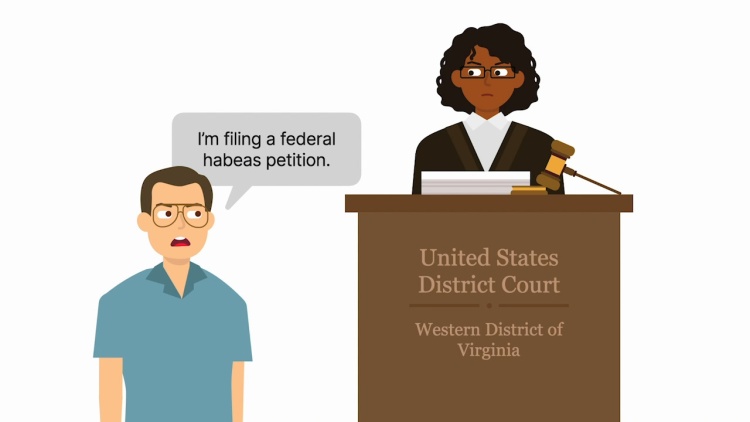Coleman v. Thompson
United States Supreme Court
501 U.S. 722 (1991)
- Written by Robert Cane, JD
Facts
Roger Coleman (defendant) was sentenced to death after being convicted of rape and capital murder. After the direct review process was final, Coleman filed a petition for a writ of habeas corpus in state circuit court. The petition raised many federal constitutional claims. The state circuit court entered judgment against Coleman on all claims. Coleman filed a notice of appeal with the state circuit court 33 days after the entry of judgment. He also filed a petition for appeal with the Virginia Supreme Court. The state moved to dismiss the appeal because it was filed more than 30 days after the final judgment in the state circuit court. The Virginia Supreme Court granted the state’s motion to dismiss and dismissed Coleman’s petition. The United States Supreme Court denied certiorari. Coleman filed a petition for a writ of habeas corpus in federal district court, which contained seven claims that had been raised for the first time in his state habeas petition in addition to four claims that had been raised on direct appeal. The district court addressed the merits of all 11 claims, ruling against Coleman on all 11 and denying his petition. The United States Court of Appeals for the Fourth Circuit affirmed the district court judgment, holding that Coleman had defaulted on all seven claims that were presented for the first time in the state habeas proceeding. The United States Supreme Court granted certiorari.
Rule of Law
Issue
Holding and Reasoning (O’Connor, J.)
Dissent (Blackmun, J.)
What to do next…
Here's why 899,000 law students have relied on our case briefs:
- Written by law professors and practitioners, not other law students. 47,000 briefs, keyed to 994 casebooks. Top-notch customer support.
- The right amount of information, includes the facts, issues, rule of law, holding and reasoning, and any concurrences and dissents.
- Access in your classes, works on your mobile and tablet. Massive library of related video lessons and high quality multiple-choice questions.
- Easy to use, uniform format for every case brief. Written in plain English, not in legalese. Our briefs summarize and simplify; they don’t just repeat the court’s language.





